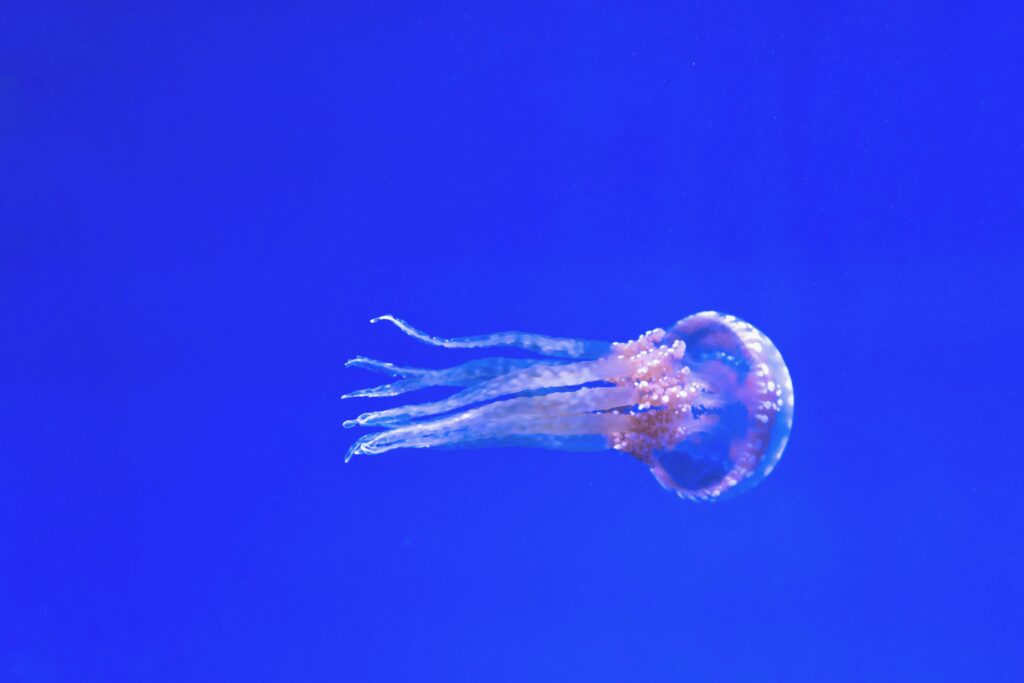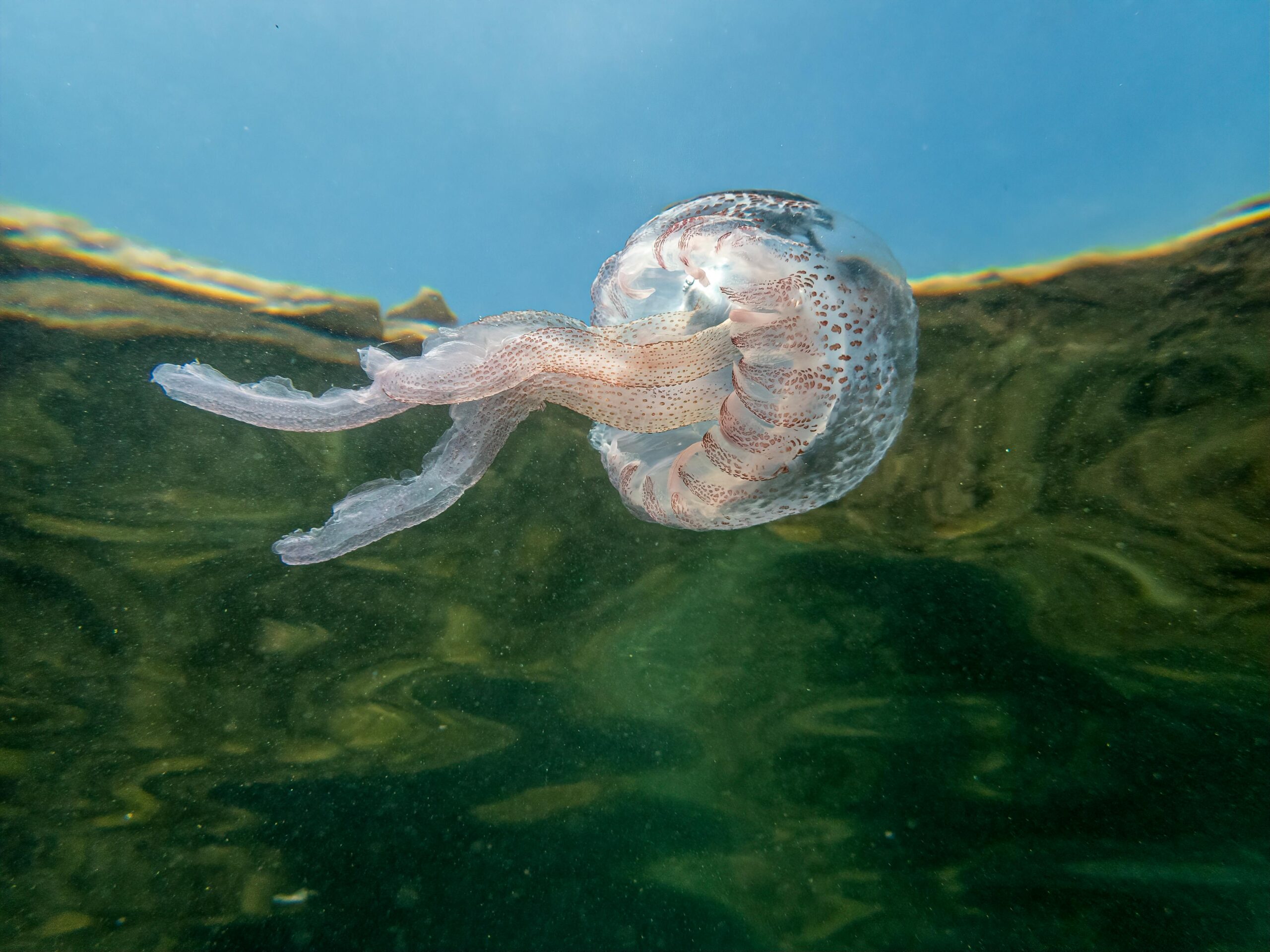Introduction
Welcome to the mesmerizing realm of jellyfish! These graceful creatures, known for their translucent bodies and ethereal movements, have captivated the curiosity of marine enthusiasts and scientists alike. In this comprehensive guide, we will delve deep into the intricacies of jellyfish, uncovering their secrets, habitats, and importance in the marine ecosystem. Whether you’re a seasoned oceanographer or a curious novice, prepare to be enthralled by the enchanting world of jellyfish.
Majestic Jelly Fish
Understanding Jellyfish Anatomy
Jellyfish are mesmerizing creatures with a unique anatomy perfectly adapted to their marine environment. Their bell-shaped bodies, often transparent or translucent, house a delicate network of tentacles equipped with specialized cells called cnidocytes. These cells contain venomous harpoons used for hunting prey and defending against predators. Despite their seemingly simple structure, jellyfish exhibit remarkable resilience and adaptability, making them a fascinating subject of study for marine biologists worldwide.
Lifecycle of Jellyfish
The lifecycle of a jellyfish is a fascinating journey characterized by distinct stages of development. It typically begins with a larval phase, where tiny larvae known as planulae drift in the ocean currents before settling on a suitable substrate. Once attached, the planula metamorphoses into a polyp, resembling a miniature sea anemone. Through a process called budding, the polyp gives rise to juvenile jellyfish known as ephyrae, which eventually mature into adult jellyfish. This cyclical lifecycle ensures the perpetuation of jellyfish populations across oceans worldwide.
Ecological Role of Jellyfish
Jellyfish play a vital role in maintaining the ecological balance of marine ecosystems. As opportunistic predators, they help control the populations of planktonic organisms, preventing unchecked growth that could lead to ecosystem imbalances. Additionally, jellyfish serve as a food source for various marine species, including sea turtles, fish, and birds. Their presence influences nutrient cycling and oceanic currents, contributing to the dynamic interplay of marine life
[Jelly Fish: A Magnificent Marine Specie].
Jelly Fish: Diversity and Adaptations

Varieties of Jellyfish
Jellyfish exhibit a diverse array of species, each adapted to thrive in specific environmental conditions. From the iconic moon jellyfish with its gentle pulsating movements to the strikingly colorful lion’s mane jellyfish found in colder waters, there is a multitude of jellyfish species inhabiting oceans worldwide. Their varied shapes, sizes, and behaviors underscore the incredible biodiversity present within the marine realm.
Adaptations to Survival
Surviving in the vast expanse of the ocean requires remarkable adaptability, and jellyfish have evolved a myriad of strategies to thrive in diverse habitats. Some species exhibit bioluminescence, emitting mesmerizing light displays to attract prey or deter predators. Others possess intricate camouflage mechanisms, blending seamlessly with their surroundings to evade detection. Additionally, certain jellyfish species are capable of enduring extreme temperatures and salinity levels, showcasing their resilience in the face of environmental challenges.
Global Distribution of Jellyfish
Jellyfish are found in all the world’s oceans, from the sun-drenched waters of the tropics to the frigid depths of the Arctic and Antarctic. Their distribution is influenced by factors such as water temperature, nutrient availability, and ocean currents. While some species prefer coastal regions teeming with life, others inhabit the vast open ocean, where they drift with the currents in search of food and suitable breeding grounds. Understanding the global distribution of jellyfish is essential for monitoring their populations and assessing their ecological impact.
Jelly Fish: Interactions with Humans
Impact on Fisheries
The relationship between jellyfish and fisheries is complex and multifaceted. While jellyfish serve as prey for many commercially valuable fish species, their population explosions, known as jellyfish blooms, can have detrimental effects on fishing operations. Large aggregations of jellyfish can clog fishing nets, damage equipment, and compete with fish for food resources, leading to economic losses for fishermen and seafood industries. Understanding the dynamics of jellyfish blooms is crucial for mitigating their impact on global fisheries.
Medical Research and Biotechnology
Beyond their ecological significance, jellyfish hold immense potential for medical research and biotechnological applications. The unique properties of jellyfish venom, for example, have inspired the development of pharmaceuticals and treatments for various medical conditions, including autoimmune diseases and neurological disorders. Additionally, the bioluminescent proteins found in certain jellyfish species have revolutionized molecular biology and genetic engineering, serving as invaluable tools for researchers worldwide.
Tourism and Recreation
Jellyfish sightings often attract tourists and nature enthusiasts eager to witness these captivating creatures in their natural habitat. Coastal regions renowned for their abundant jellyfish populations often experience an influx of visitors seeking unforgettable marine encounters. However, it is essential to promote responsible tourism practices to minimize disturbances to jellyfish populations and their ecosystems. Educating the public about jellyfish safety and conservation is paramount to ensuring sustainable tourism practices and preserving marine biodiversity for future generations.
